ARCTIC BLOG: Life on ice in the High Arctic
10 September, 2015
Hello! We are 16 students and early career scientists who had one thing in common: we do polar research, but had never been to the poles! Now that’s all changed and here we are in the midst of our NERC polar field skills course run by the British Antarctic Survey in Svalbard.
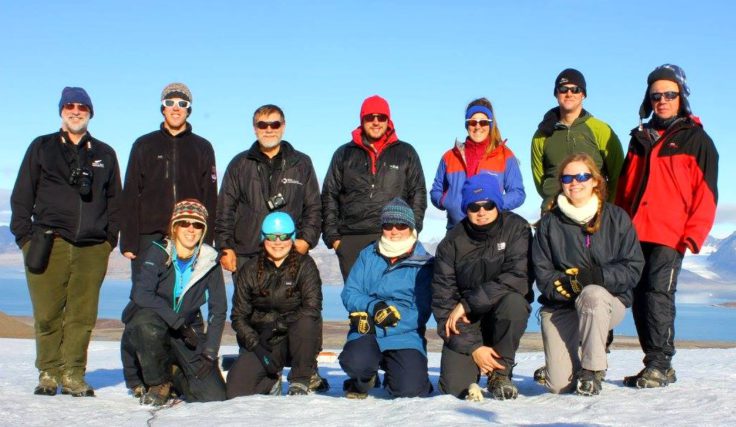
So, what have we been doing?
The first two and a half days of the course were held at Madingley Hall in Cambridge. We learnt some basics about planning, logistics, instrumentation, risk assessment and GPS mapping. Once we’d got the theory about how to plan and implement safe and effective field work – it was time to go and put it into practice!
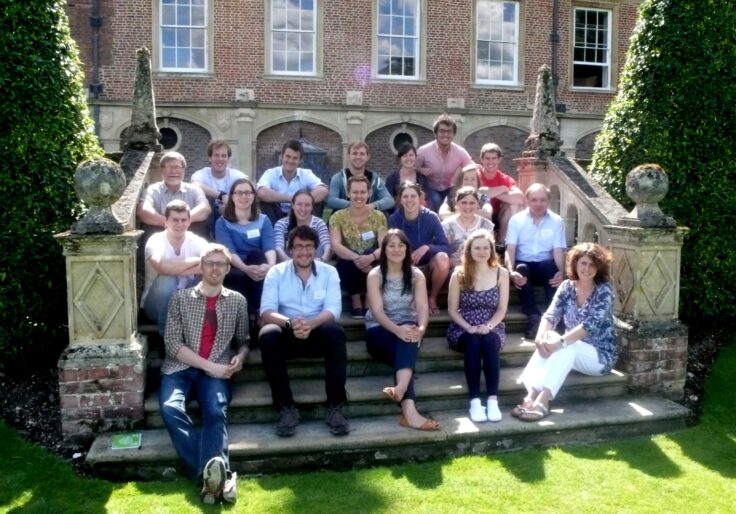
We’re now at the UK’s Arctic Research Station in Ny-Ålesund, Svalbard!
Continuous daylight eroded any tiredness from 2 taxis, 3 flights, 3 security checks, 1 bus, 1 13hr overnight boat and only 3 hours kip – the midnight sun is amazing! The hours flew by as we gazed out into the fjord, and it wasn’t too long before we were rounding the bend to Ny-Ålesund, greeted on the jetty by a smiling Nick Cox, head of the UK Arctic Research Station.
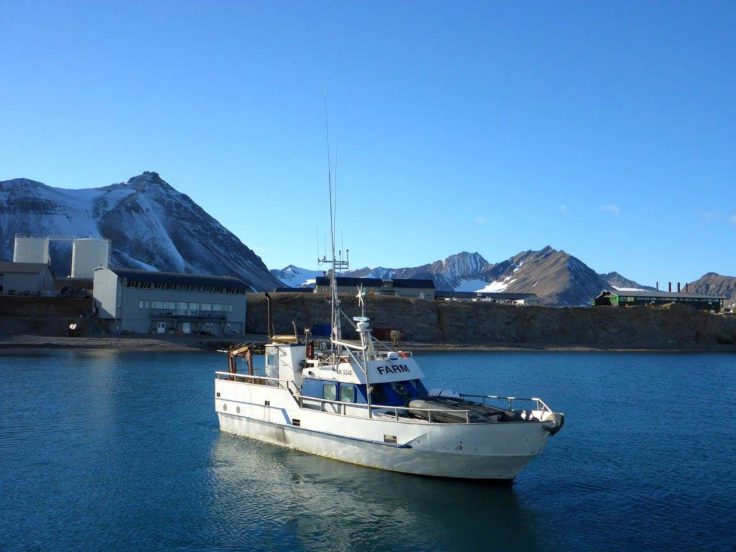
Our first full day on station was eventful! Our first objective was to learn about polar bear safety from the King’s Bay team. As guests in the bears’ habitat it is down to us to try and avoid disturbing any bears we might come across, but because of their predatory nature we needed to be trained in safe rifle handling.
Making the most of the calm weather, we then put together some essential kit (planning and logistic theory coming through) and headed out in the small boat to take a look around the Kongsvegen glacier. With cracking ice all around, fulmars overhead and mountains towering above it really was an incredible view. We watched a couple of reindeer and some Arctic fox darting around on the rocks, before beginning to weave our way back to Ny-Ålesund, dodging the small icebergs (a very important art if you want to use a boat in the poles). A few splashes to the face as we bounced a little with a slightly increased wind was a cold reminder of just how quickly things can change and how you really do need to be prepared out here.
The next job was to assemble a plan and head out of town to do some geological observations of patterned rocks formed by freeze thaw action. Loaded with survival bags, first aid kits, radios and rifles, we headed out into the evening sun and were rewarded with some spectacular views across the whole bay.
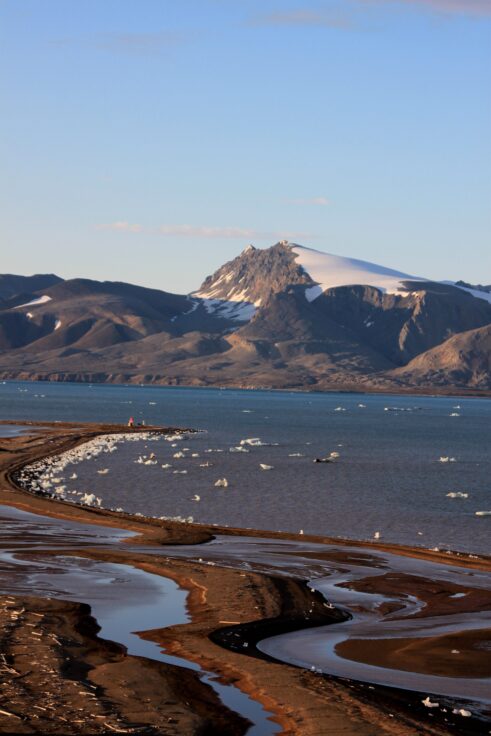
Full day number two saw us plan and carry some biological sampling with BAS’s expert ecologist Professor Pete Convey. Pete talked us through different habitats as we walked nearly 20km through moraines and across tundra; at each important vegetated site we collected samples. Back at the station we extracted all the live insects and beasties and identified them using microscopes.
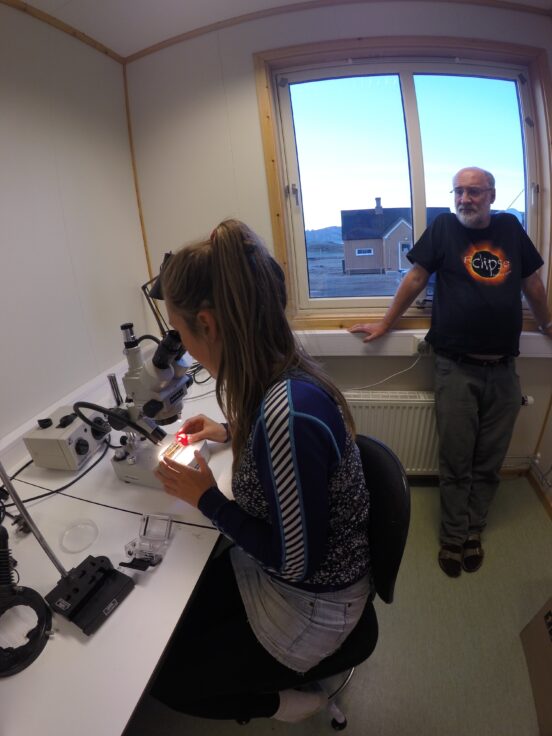
We’ve just come to the end of our final full day in the Arctic and today we really feel like all our training has been put into practice. BAS’s ice sheet expert Ed King took us out to make field observations of a nearby glacier. Our small field operation meant we had to distribute and carry a lot of kit between the team. On top of our usual survival essentials, we had sledges, liquid batteries, radar equipment, tools, GPS systems, climbing harnesses and pull ropes. Thanks to careful planning, good weather and effective team work, the day was a huge success and (almost) everything went to plan. We carried out two radar traverses of the glacier in order to understand the bed of material it’s sat on and we also mapped its leading edge.
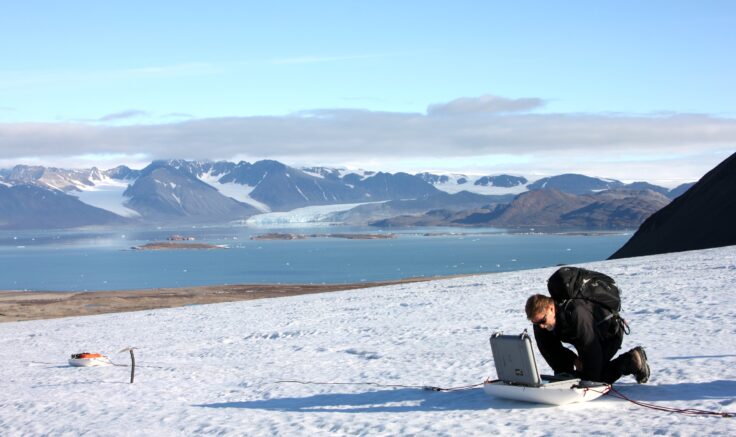
We’re now back at the station, analysing the field data we have collected and getting ready to say goodbye (for now) to this magical place.